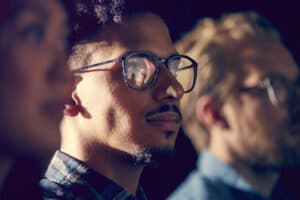Learning a new language is an exciting and rewarding journey, opening doors to new cultures, friendships, and job opportunities. However, many aspiring language learners often find themselves wondering: how long will it actually take to achieve proficiency? Understanding the time commitment involved to learn a new language is crucial, as it helps set realistic expectations and keeps motivation high throughout the process.
The duration it takes to learn a language can vary significantly based on several factors. These include the inherent difficulty of the language, the learning environment, personal motivation, and prior experience with other languages. By exploring these elements, we can better understand the language learning timeline and discover effective strategies to make the most of our efforts.
Whether you’re aiming for basic conversational skills or striving for fluency, grasping the nuances of language acquisition will empower you on your journey.
Table of Contents
- 4 Factors That Affect How Fast You Can Learn a Language
- Estimated Time Frames for Different Language Levels
- Tips to Learn a New Language
- The Takeaway
Transform your workforce with effective language training
Discover how tailored corporate language learning programs can enhance communication and collaboration in your organization.
4 Factors That Affect How Fast You Can Learn a Language
1. Language Difficulty
One of the most significant determinants of how long it takes to learn a language is its difficulty level. Languages are categorized into families based on their linguistic similarities. For example:
- Romance Languages: These languages include Spanish, French, and Italian, and share many similarities with English, making them generally easier for English speakers to learn.
- Germanic Languages: German and Dutch belong to this family and can be more accessible due to shared vocabulary and grammar structures.
- Slavic Languages: Languages like Russian and Polish present more challenges due to their complex grammar and different writing systems.
For English speakers, languages such as Spanish and French are often considered easier to learn, while languages like Mandarin Chinese or Arabic are typically viewed as more difficult due to their distinct grammar, scripts, and tonal qualities.
2. Learning Environment
The environment in which you learn a new language plays a crucial role in determining how quickly you can achieve proficiency. Three primary learning environments are:
- Immersion: Being surrounded by native speakers and using the language in daily life can significantly accelerate learning. Immersion encourages practical usage and helps learners pick up nuances and cultural context quickly.
- Classroom Learning: Traditional classroom settings provide structured learning but may lack the real-world practice that immersion offers.
- App and Online Methods: These flexible options allow learners to progress at their own pace, but they require self-discipline and motivation to be effective.
3. Personal Motivation and Goals
Your personal motivation and specific goals can greatly influence the speed it takes you to learn a new language. Setting clear objectives—whether they are short-term (e.g., preparing for a trip) or long-term (e.g., achieving fluency for career advancement)—can help maintain focus and drive.
Motivation is a powerful force; learners who are passionate about their goals tend to progress faster. Conversely, those who lack clear motivation may find it challenging to stay engaged, which can slow down their learning journey.

4. Prior Language Experience
Previous experience with other languages can also affect how quickly you learn a new one. For instance, if you already speak a Romance language, learning another from the same family may be easier due to familiar vocabulary and grammatical structures.
Moreover, individuals who have successfully learned a language in the past often develop effective strategies and study habits that can be applied to new languages, further accelerating the learning process.
Estimated Time Frames for Different Language Levels
Understanding the estimated time frames for achieving different levels of language proficiency can help learners set realistic goals and track their progress. The Common European Framework of Reference (CEFR) provides a useful guideline for these proficiency levels.
Basic Conversational Skills
To achieve A1/A2 level proficiency, which corresponds to basic conversational skills, learners typically need around 80 to 200 hours of study. At this level, you can understand and use familiar everyday expressions and basic phrases aimed at satisfying simple needs.
Practical tips for reaching this level quickly:
- Focus on Vocabulary: Prioritize learning essential vocabulary and phrases that are commonly used in daily conversations.
- Engage in Simple Conversations: Practice speaking with native speakers or language partners, even if it’s just basic exchanges.
- Use Language Apps: Utilize apps like Babbel that are designed for beginners to build foundational skills quickly.
- Listen and Repeat: Incorporate listening exercises, such as podcasts or videos, to improve pronunciation and comprehension.
Intermediate Proficiency
Achieving B1/B2 level proficiency generally requires 400 to 800 hours of study. At this stage, learners can understand the main ideas of complex texts, interact with a degree of fluency, and produce clear, detailed texts on various topics.
Key milestones and learning strategies:
- Expand Vocabulary: Focus on thematic vocabulary and phrases relevant to your interests or profession.
- Practice Writing: Regularly write essays or journal entries to enhance writing skills and grammar.
- Engage in Conversations: Participate in language exchange meetups or online classes to practice speaking with others.
- Consume Diverse Media: Watch movies, read books, or listen to music in the target language to improve comprehension and cultural understanding.
Advanced Proficiency
To reach C1/C2 level proficiency, learners often need 1,000 to 2,200 hours of dedicated study. At this advanced level, individuals can understand a wide range of demanding texts, express ideas fluently and spontaneously, and produce well-structured, detailed texts on complex subjects.
Importance of cultural immersion and advanced study techniques:
- Cultural Immersion: Engaging deeply with the culture through travel or work can greatly enhance language skills and cultural understanding.
- Advanced Learning Techniques: Consider enrolling in advanced language courses, attending workshops, or participating in professional development programs that focus on language use in specific fields.
- Networking with Native Speakers: Build relationships with native speakers to practice advanced conversational skills and gain insights into colloquial expressions and cultural nuances.
Curious about Babbel for Business?
Book a demo now and let us show you how our platform can transform your business.
Tips to Learn a New Language
To make the most of your language learning journey and achieve proficiency more quickly, consider implementing the following strategies:
Set Clear Goals
Establishing specific, measurable objectives is crucial for maintaining focus and motivation. Instead of vague goals like “I want to learn Spanish,” consider setting clear targets such as “I want to hold a 10-minute conversation in Spanish within three months” or “I aim to learn 50 new vocabulary words each week.” This structured approach not only helps track progress but also provides a sense of accomplishment as you meet each milestone.
Consistent Practice
Consistency is key in language learning. Establishing daily practice routines can significantly enhance retention and fluency. Aim for short, focused study sessions in 15-20 minute increments rather than infrequent, lengthy ones.
Utilize Technology and Resources
In today’s digital age, a wealth of resources is available at your fingertips. Language apps like Babbel offer structured lessons and gamified learning experiences, as well as 1:1 lessons to practice your new language skills with certified teachers.
Engage with Native Speakers
One of the most effective ways to quickly learn a new language is to engage with native speakers. Having a conversation partner provides the opportunity for you to practice your skills in real time. Regular interaction with native speakers not only improves speaking and listening skills but also enhances cultural understanding and contextual usage of the language.
Cultural Immersion
Traveling to a country where the language is spoken allows for real-world practice and deeper cultural insights. However, if travel isn’t feasible, you can still immerse yourself in the language through:
- Media Consumption: Watch movies, TV shows, and YouTube channels in the target language. Subtitled content can help bridge understanding while exposing you to colloquial language.
- Cultural Activities: Attend local cultural events, cooking classes, or workshops related to the language. Engaging with the culture enhances motivation and makes learning more enjoyable.
The Takeaway
Learning a new language is not just about the destination, but the enriching experiences along the way. Embrace the challenges and celebrate your progress, no matter how small! Each step you take brings you closer to your goals and opens up a world of opportunities.
Ready to get started on your language learning journey? Visit our website and schedule a demo to learn how Babbel for Business can support your team.

The Babbel Method is scientifically proven!
Discover in our report “Scientific Findings on Learning Success”, what a Yale University study discovered about learning with Babbel and why the Babbel Method quickly leads to success.






